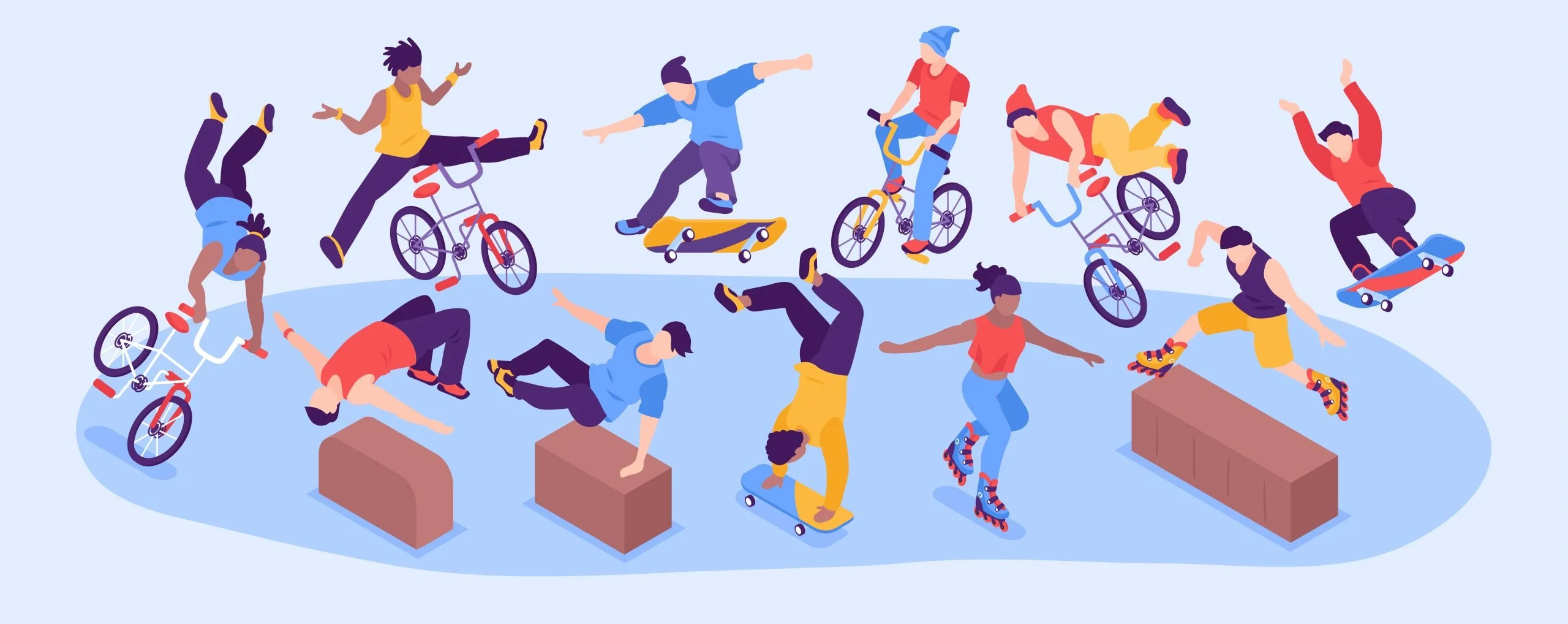
BICYCLE SAFETY
- A helmet protects your child from serious injury, and should always be worn. And remember, wearing a helmet at all times helps children develop the helmet habit.
- Your child needs to wear a helmet on every bike ride, no matter how short or how close to home. Many injuries happen in driveways, on sidewalks, and on bike paths, not just on streets. Children learn best by observing you. Set the example: Whenever you ride, put on your helmet.
- When purchasing a helmet, look for a label or sticker that says the helmet meets the CPSC safety standard.
- A helmet should be worn so that it is level on the head and covers the forehead, not tipped forward or backwards. The strap should be securely fastened with about 2 fingers able to fit between chin and strap. The helmet should be snug on the head, but not overly tight. Skin should move with the helmet when moved side to side. If needed, the helmet's sizing pads can help improve the fit.
- Do not push your child to ride a 2-wheeled bike without training wheels until he or she is ready. Consider your child's coordination and desire to learn to ride. Stick with coaster (foot) brakes until your child is older and more experienced for hand brakes. Consider a balance bike with no pedals for young children to learn riding skills.
- Take your child with you when you shop for the bike, so that he or she can try it out. The value of properly fitted bike far outweighs the value of surprising your child with a new one. Buy a bike that is the right size, not one your child has to "grow into." Oversized bikes are especially dangerous.
- Your child should ride on the right, facing the same direction as traffic, and should be taught to obey all stop signs and other traffic control devices. Children should never ride at night.
SKATEBOARD, SCOOTER, IN-LINE SKATING AND HEELYS SAFETY
- All skateboarders and scooter-riders should wear protective gear; helmets are particularly important for preventing and minimizing head injuries. Riders should wear helmets that meet ASTM or other approved safety standards, and that are specifically designed to reduce the effects of skating hazards.
- Communities should continue to develop skateboard parks, which are more likely to be monitored for safety than ramps and jumps constructed by children at home.
- While in-line skating or using Heelys, only skate on designated paths or rinks and not in the street.
- Most injuries occur due to falls. Inexperienced riders should only ride as fast as they can comfortably slow down and maintain control. They should practice falling on grass or other soft surfaces. Before riding, skateboarders should survey the riding terrain for obstacles such as potholes, rocks, or any debris. Protective wrist, elbow and kneepads should be worn.
- Children should never ride skateboards or scooters in or near moving traffic.
- Children should never skate alone. Children under the age of eight should be closely supervised at all times.